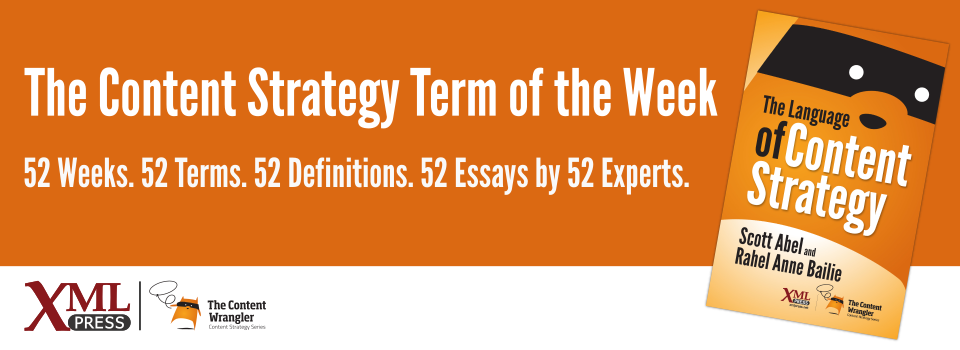What is it?
The inclusion of content from one source into another source by hyperlink reference. The presented result appears as though the included content had occurred at the point of reference.
Why is it important?
First formalized as the idea of link-based, use-by reference, transclusion is a fundamental feature for any document representation system that enables true use-by-reference.
Why does a content strategist need to know this?
Transclusion was coined by hypertext pioneer Ted Nelson as an attempt to define and codify the concept that we now accept as hypertext. It has only been with technologies such as Structured Generalized Markup Language (SGML), Extensible Markup Language (XML), and Hypertext Markup Language (HTML) that it has become possible to implement transclusion.
Content used to be reused through the problematic copy-and-paste method. Transclusion allows content to be reused far more efficiently by the more sophisticated method of including a hyperlink that refers to the content to be placed there. In the information management sense, transclusion makes content easy to track, removes redundant information, eliminates errors, and so on.
Use-by-reference serves the creators and managers of content by allowing a single instance to be used in multiple places and by maintaining an explicit link between the reused content and all of the places it is used, which supports better tracking and management. These two aspects of use-by-reference—transparency to readers and manageability—are embodied in the term transclusion.
Ideally, source content would be authored and managed in one system and delivered to many other systems. It requires a lot of effort to process transclusion links. That’s one reason why transclusion is not a general feature of HTML; it’s much easier to do the processing in the authoring environment and deliver the HTML content with the references already resolved.
Transclusion has been implemented in many XML applications, such as the Darwin Information Typing Architecture (DITA) content reference (conref) and map facilities. Many content management systems provide proprietary facilities for use-by-reference that can also be considered forms of transclusion.

